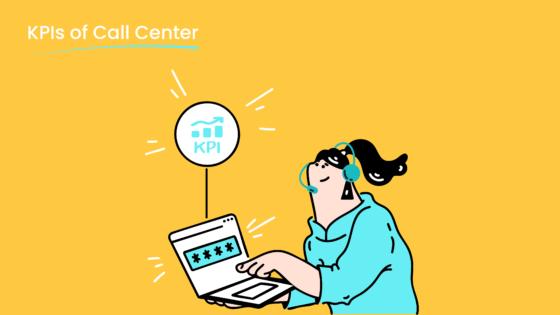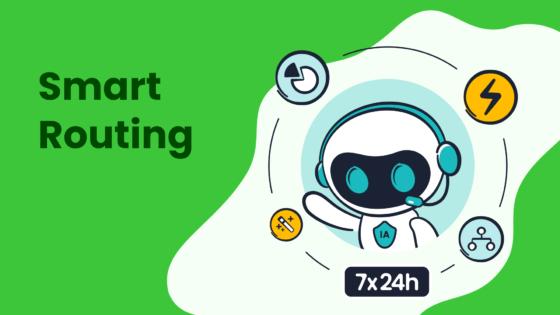How to Measure First Response Time for Better Customer Service

First Response Time (FRT) measures how quickly your customer support team responds to a customer’s initial inquiry. It plays a critical role in shaping the overall customer experience. Customers value speed, with 82% expecting immediate answers to their questions. Quick responses not only enhance customer satisfaction but also improve loyalty. On the other hand, delays can lead to frustration and even churn.
Faster first response times directly impact customer satisfaction scores. Luis Hernandez, VP of Customer Success at Geckoboard, emphasizes that timeliness builds trust and strengthens relationships. Tools like Sobot’s customer service solutions help businesses achieve these goals by streamlining communication and ensuring prompt responses.
Understanding First Response Time (FRT)

What Is First Response Time?
Definition and importance in customer service
First Response Time (FRT) refers to the time it takes for a customer support agent to respond to a customer’s initial inquiry. This metric is crucial in customer service because it directly impacts how customers perceive your brand. A quick response shows that you value their time and concerns, which can lead to higher satisfaction levels.
For example, if a customer sends an email about a billing issue and receives a reply within an hour, they are more likely to feel valued. On the other hand, a delayed response may leave them frustrated. FRT is often used interchangeably with "First Reply Time" in the industry, emphasizing its role in creating a positive first impression.
Difference between FRT and resolution time
While FRT measures the time to the first response, resolution time tracks the total time taken to resolve an issue. For instance, a customer might receive an initial reply within minutes, but resolving their issue could take hours or even days, depending on its complexity. Both metrics are essential, but FRT focuses on the speed of acknowledgment, which sets the tone for the entire interaction.
Why First Response Time Matters
Impact on customer satisfaction and loyalty
Shorter FRTs significantly enhance customer satisfaction and loyalty. Customers appreciate prompt responses, which make them feel heard and valued. Studies show that faster FRTs lead to higher Customer Satisfaction Scores (CSAT) and improved Net Promoter Scores (NPS). For example:
- Customers who receive quick replies are more likely to recommend your brand.
- Prompt responses often result in positive reviews and referrals.
By prioritizing FRT, you can build stronger relationships with your customers and encourage repeat business.
Role in building trust and enhancing customer experience
FRT plays a vital role in building trust. When customers see that your team responds quickly, they feel confident in your ability to address their concerns. This trust enhances the overall customer experience, making them more likely to stay loyal to your brand. For instance, Sobot’s Voice/Call Center ensures fast response times through features like smart call routing and real-time monitoring, helping businesses deliver exceptional customer service.
Tip: Use tools like Sobot’s solutions to track and improve FRT across multiple channels, ensuring a seamless experience for your customers.
How to Measure First Response Time Accurately
Formula for Calculating FRT
Step-by-step explanation of the FRT formula
Measuring FRT accurately requires a clear understanding of its calculation. The formula is straightforward:
FRT = Total FRTs during a specific time / Total number of tickets
Follow these steps to calculate FRT effectively:
- Identify the time when a customer submits their initial inquiry.
- Record the exact time when your customer support team sends the first reply.
- Subtract the initial contact time from the first reply time to determine the duration.
- Sum up all FRTs over a specific period and divide by the total number of tickets.
This method ensures you capture the average time it takes to respond to customers, providing a reliable customer service metric.
Examples of FRT calculation
Let’s consider an example. Suppose your team responds to 15 tickets in a day, taking a total of 62 minutes. Using the formula:
FRT = 62 minutes / 15 tickets = 4.1 minutes per ticket
This result shows that your team’s average first response time is 4.1 minutes, which is a strong indicator of efficiency.
Tools for Tracking FRT
Features of Sobot's Voice/Call Center for FRT measurement

Sobot’s Voice/Call Center offers advanced tools to track and improve FRT. Its real-time monitoring and smart call routing features ensure that customer inquiries are directed to the right agents quickly. The platform also provides detailed analytics, allowing you to measure FRT across multiple channels. With a 99.99% system uptime, Sobot ensures reliable performance, helping you maintain exceptional customer service standards.
Other customer service tools for tracking FRT
Many tools can help you track FRT effectively. For example:
- HubSpot integrates with CRM systems to monitor team efficiency.
- Help Scout focuses on email support and measures both first response and resolution times.
- Sprout Social tracks response times for social media inquiries.
These tools provide insights into your team’s performance, helping you identify areas for improvement.
Best Practices for Accurate Measurement
Excluding automated responses for precision
To ensure accurate FRT measurement, exclude automated responses from your calculations. Automated replies, such as “Thank you for contacting us,” do not reflect the actual time it takes for an agent to respond. By focusing only on human responses, you gain a clearer picture of your team’s efficiency.
Tracking FRT across multiple communication channels
Customers use various channels to reach out, including email, chat, and phone. Track FRT separately for each channel to identify performance gaps. For instance, Sobot’s unified workspace consolidates data from all channels, making it easier to monitor and optimize FRT. This approach ensures a consistent customer experience across platforms.
First Response Time Benchmarks and Influencing Factors
Industry Benchmarks for FRT
Average FRT by industry (e.g., retail, SaaS, etc.)
Understanding the expected benchmarks for FRT helps you evaluate your customer service performance. Different industries have varying standards for the average first response time. For example:
| Industry Type | Average First Response Time |
|---|---|
| Consumer Services | 6 hours 11 minutes |
| Retail | 5 hours 24 minutes |
| Education | 3 hours 21 minutes |
| B2B (varied) | 30 seconds to 26 hours |
In B2C industries like retail, customers expect faster responses due to the nature of their inquiries. On the other hand, B2B industries often deal with more complex issues, leading to a broader range of response times. Striving to meet or exceed these benchmarks can significantly enhance your customer service reputation.
Channel-specific benchmarks (e.g., email, chat, phone)
The communication channel also influences FRT expectations. Customers using live chat often expect a response in under 2 minutes, while email inquiries typically allow for a 12-24 hour window. In call centers, the goal is to respond to 80% of calls within 20 seconds. Here's a quick breakdown:
- Live Chat: Under 2 minutes
- Email: 12-24 hours
- Phone Calls: 20 seconds for 80% of inquiries
- Callback Requests: Within a few hours
Meeting these benchmarks ensures your customer service aligns with customer expectations, improving satisfaction and loyalty.
Factors That Affect FRT
Volume of customer inquiries and agent availability
The number of customer inquiries your team receives directly impacts FRT. A high inquiry volume can overwhelm your agents, leading to delays. Similarly, limited agent availability during peak times can increase response times. For example, if your team handles 500 inquiries daily but only has five agents available, the average response time will likely increase.
| Metric | Description |
|---|---|
| First Response Time (FRT) | The time between a customer's initial message and a support agent's response. |
| Customer Inquiry Volume | The total number of inquiries received over a specific period. |
| Agent Availability | The number of agents available to respond to inquiries at any given time. |
| Impact on Customer Satisfaction | A quick FRT is linked to higher customer satisfaction, as 90% of customers value immediate responses. |
To manage these challenges, you can use tools like Sobot’s Voice/Call Center. Features such as smart call routing and real-time monitoring help distribute inquiries efficiently, reducing FRT even during busy periods.
Complexity of customer issues and channel-specific challenges
The complexity of customer issues also affects FRT. Simple inquiries, like password resets, can be resolved quickly. However, technical or multi-step problems require more time. Additionally, each communication channel presents unique challenges. For instance, live chat demands immediate attention, while email allows for more detailed responses.
Factors like agent training and the quality of your customer service tools play a crucial role here. Sobot’s unified workspace consolidates customer data, enabling agents to address complex issues faster. This approach minimizes delays and ensures a seamless experience across all channels.
Strategies to Improve First Response Time

Training and Empowering Customer Service Teams
Importance of agent training for faster responses
Well-trained agents form the backbone of efficient customer service. Training equips your customer care teams with the skills to handle inquiries quickly and effectively. For example, agents who understand your products and services thoroughly can provide fast responses without needing to escalate issues. Regular training sessions also keep your team updated on best practices, ensuring they meet response time goals consistently.
Empowering agents with decision-making tools
Empowering agents with decision-making tools reduces delays in resolving customer concerns. Tools like Sobot’s unified workspace provide agents with instant access to customer data, enabling them to make informed decisions. When agents have the autonomy to address issues without waiting for managerial approval, they can improve first response time significantly.
Leveraging Technology and Automation
Using Sobot's Voice/Call Center for smart call routing

Sobot’s Voice/Call Center uses smart call routing to connect customers to the most suitable agents. This feature ensures that inquiries are handled by the right person, reducing unnecessary transfers and delays. With a 99.99% system uptime, Sobot guarantees reliable performance, helping you achieve your response time goals even during peak periods.
Automating ticket prioritization and chatbot integration
Automation plays a crucial role in optimizing first response time. Chatbots can handle repetitive queries, allowing agents to focus on complex issues. For instance, 82% of consumers prefer immediate answers, which chatbots can provide effectively. Additionally, automating ticket prioritization ensures that urgent inquiries are addressed first, further enhancing customer satisfaction.
| Metric | Impact |
|---|---|
| Repeat Purchases | 36% increase |
| First Response Time | 37% reduction |
| Resolution Time | 52% reduction |
| Ticket-to-Order Ratio | 27% decrease |
| Customer Satisfaction (CSAT) | 1% increase |

Optimizing Internal Processes
Streamlining workflows and setting clear SLAs
Streamlined workflows help your team respond faster. By setting clear Service Level Agreements (SLAs), you establish response time goals that align with customer expectations. For example, SLAs might specify a 2-minute response time for live chat or a 24-hour window for email inquiries. Tools like Sobot’s Voice/Call Center simplify workflow management, ensuring your team meets these targets.
Monitoring and analyzing FRT data for continuous improvement
Regularly monitoring FRT data helps you identify bottlenecks and areas for improvement. Use analytics tools to track performance across customer support channels. For example, Sobot’s real-time monitoring feature provides actionable insights, enabling you to refine your processes. Continuous analysis ensures you stay ahead of customer expectations, delivering quick responses consistently.
| Optimization Strategy | Description |
|---|---|
| Train Your Agents | Invest in training to equip agents with skills to address customer concerns effectively. |
| Build a Robust Knowledge Base | Maintain a centralized knowledge base for quick access to information, reducing research time. |
| Provide Omnichannel Support | Implement a system that allows customers to reach support through various channels seamlessly. |
| Embrace Strategic AI | Use AI tools to automate responses to common queries, allowing agents to focus on complex issues. |
| Implement Intelligent Routing | Automatically direct inquiries to the most suitable agents, improving response efficiency. |
| Monitor and Analyze Metrics | Regularly track KPIs related to customer support to identify areas for improvement. |
Key Takeaways for Enhancing Customer Service
Summary of FRT Best Practices
Importance of tracking and improving FRT
Tracking and improving first response time (FRT) is essential for delivering exceptional customer service. FRT serves as a key metric to measure how quickly your team acknowledges customer inquiries. By monitoring this metric, you can identify bottlenecks and implement strategies to reduce response times. Studies show that 82% of consumers expect immediate answers, making FRT a critical factor in customer satisfaction. Faster responses not only enhance the customer experience but also improve customer retention by alleviating frustration.
Note: Regularly analyzing FRT data helps you align your service standards with customer expectations, ensuring continuous improvement.
Role of FRT in overall customer experience
FRT plays a pivotal role in shaping the overall customer experience. Quick responses reassure customers that their concerns are being addressed, fostering trust and loyalty. For example, aiming for a first response time of under one hour can significantly boost satisfaction levels. A survey revealed that 90% of customers rate an "immediate" response as essential when seeking support. By prioritizing FRT, you demonstrate that your brand values customer time, which strengthens relationships and encourages repeat business.
Encouragement to Take Action
Implementing tools like Sobot's Voice/Call Center

To improve FRT, consider leveraging advanced tools like Sobot's Voice/Call Center. This platform offers features such as smart call routing and real-time monitoring, ensuring inquiries are directed to the right agents promptly. With a 99.99% system uptime, Sobot guarantees reliable performance, even during peak periods. These tools not only enhance operational effectiveness but also help meet customer service benchmarks across various channels, from live chat to phone support.
Tip: Automating ticket prioritization and integrating chatbots can further reduce response times, allowing your team to focus on complex issues.
Continuously monitoring and optimizing FRT strategies
Continuous monitoring of FRT is vital for maintaining high customer service standards. By comparing actual performance against industry benchmarks, you can identify areas for improvement. For instance, tracking FRT across multiple channels helps you address gaps and ensure consistency. A study by Deloitte highlights that customer-centric companies are 60% more profitable, emphasizing the financial benefits of optimizing FRT. Regularly refining your strategies ensures your team stays ahead of customer expectations, driving satisfaction and retention.
Call to Action: Start by implementing tools like Sobot's Voice/Call Center to streamline your processes and achieve faster response times.
First response time (FRT) is a critical metric in customer service. It reflects how quickly your team acknowledges customer inquiries, directly influencing satisfaction and loyalty. Measuring and improving FRT helps you deliver faster responses, build trust, and enhance the overall customer experience. For example, studies show that 82% of customers expect immediate answers, making FRT a key factor in meeting expectations.
Adopting tools like Sobot's Voice/Call Center can streamline your processes and improve response times. Features such as smart call routing and real-time monitoring ensure your team delivers exceptional service. Start implementing these strategies today to elevate your customer service standards and foster stronger relationships with your customers.
FAQ
What is a good First Response Time (FRT) for customer service?
A good FRT depends on the communication channel. For live chat, aim for under 2 minutes. Email inquiries should receive a response within 12-24 hours. Tools like Sobot’s Voice/Call Center help you meet these benchmarks by offering smart call routing and real-time monitoring.
How can I improve my team’s First Response Time (FRT)?
You can improve FRT by training agents, automating repetitive tasks, and using tools like Sobot’s Voice/Call Center. Features such as AI-powered voicebots and ticket prioritization ensure faster responses. For example, automation can reduce FRT by up to 37%, enhancing customer satisfaction.
Does First Response Time (FRT) affect customer loyalty?
Yes, FRT directly impacts loyalty. Customers value quick responses, which build trust and satisfaction. Studies show that 90% of customers rate immediate responses as essential. Using Sobot’s solutions ensures faster FRT, helping you retain customers and boost repeat purchases.
Should automated replies count toward First Response Time (FRT)?
No, automated replies should not count. They don’t reflect the actual time it takes for an agent to respond. Excluding them ensures accurate FRT measurement. Sobot’s analytics tools help you track human responses across channels for precise insights.
Can Sobot help track First Response Time (FRT) across multiple channels?
Yes, Sobot’s unified workspace tracks FRT across email, chat, and phone. It consolidates data, enabling you to monitor performance and identify gaps. This ensures consistent response times, improving customer satisfaction across all communication platforms.
See Also
Enhancing Call Center Efficiency Through Effective Monitoring Strategies
Ten Strategies to Improve Customer Satisfaction in Live Chat
Essential Practices for Effective Call Center Quality Management
Comparative Analysis of Leading Interactive Voice Response Solutions
Increasing Efficiency with AI-Driven Customer Service Solutions